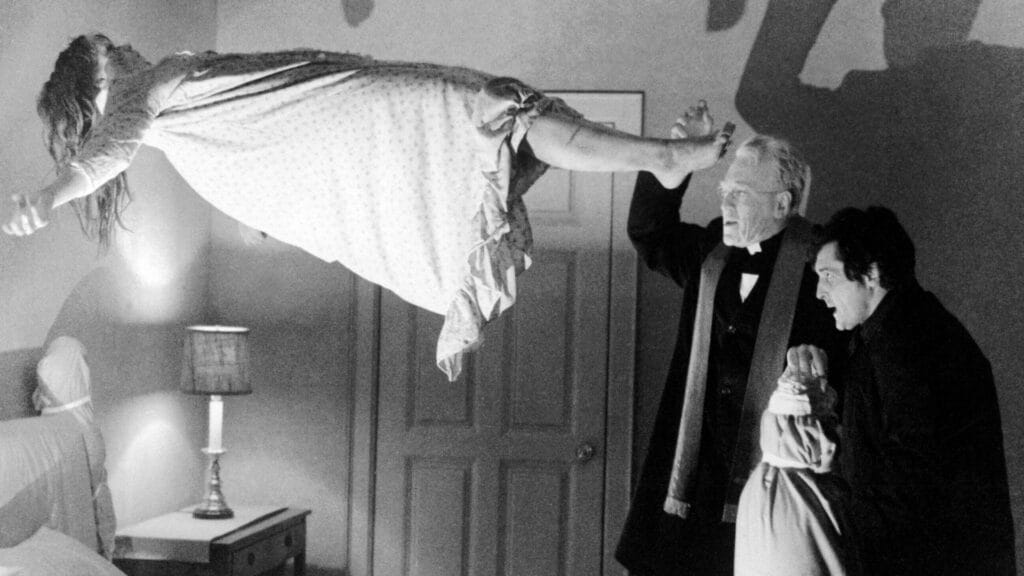Exorcism has fascinated humans for centuries. It spans religion, folklore, and psychology. Many cultures have embraced the idea of demonic possession and its expulsion. This article explores the origins, evolution, and modern practice of exorcism.

Ancient Origins of Exorcism
Exorcism dates back thousands of years. In ancient Mesopotamia, priests believed spirits could enter human bodies. They used chants, amulets, and statues to drive out evil. Similarly, ancient Egyptians used incantations and offerings for protection. They honored divine protectors like the god Bes, who shielded people from demonic forces.
Hindu texts, such as the Atharvaveda, include mantras to dispel evil. Hindu priests, or tantrics, performed rituals using sacred fire, holy water, and prayers. Sometimes, they offered sacrifices to calm the disturbed spirit.
In China, Taoist priests conducted exorcisms with talismans and prayers. They used protective charms and ritualistic dances. Their ceremonies invoked celestial deities and balanced yin and yang to restore spiritual harmony.
Exorcism in Christianity
Exorcism is closely linked to Christianity. Biblical accounts describe Jesus casting out demons. Stories in the Gospels show Jesus freeing people from possession, emphasizing the threat of evil.
By the Middle Ages, the Catholic Church formalized exorcism. The Rituale Romanum (1614) became the official guide. Exorcists used holy water, prayers, and sacred objects like the crucifix. These rituals sometimes lasted days or weeks. The belief in demonic possession was strong during medieval times.
After the Protestant Reformation in the 16th century, formal rites declined. Many Protestant groups focused on faith-based healing. However, some denominations still practice exorcisms today. Then it spread beyond Europe to Africa, South America, and Asia, adapting to local beliefs.
Exorcism in Other Cultures
Exorcism is not limited to Christianity. In Islam, the practice of ruqyah uses Quranic recitations to remove evil. Muslim healers, called raqi, recite verses, use blessed water, and offer supplications. Possession by jinn is a common belief in Islamic tradition.
Many indigenous cultures also practice exorcism. Shamans in Africa and the Americas use chanting, drumming, and herbal remedies. Native American healers perform purification rituals with sage, smoke, and prayers. In African religions like Vodou and Santería, priests invoke ancestral spirits to expel negative forces.
Even Buddhism has rituals to deal with negative entities. Tibetan and Japanese monks chant and meditate to drive out harmful spirits. Some Buddhist practices focus on appeasing spirits with food and prayers.
Modern-Day Exorcism
Despite scientific progress, exorcism still sparks debate. The Catholic Church continues to appoint official exorcists. Films like The Exorcist (1973) keep the subject in pop culture. Cases of alleged possession often intersect with psychological disorders such as dissociative identity disorder and schizophrenia.
Self-proclaimed exorcists operate outside traditional religious institutions. Many advertise their services online. These practices sometimes lead to controversy and even harm. Governments and health organizations are discussing stricter regulations to prevent abuse.
Scholars, theologians, and skeptics continue to debate exorcism. Studies suggest that the power of suggestion and the placebo effect play roles in these rituals. Yet, for believers, it remains a powerful spiritual tool.
Pop Culture and the Future of Exorcism
Exorcism has left a mark on films, literature, and television. Movies like The Conjuring and The Rite dramatize exorcisms. Although often exaggerated, these depictions fuel public interest in the supernatural.
Paranormal investigation shows and online horror communities keep the discussion alive. Documentaries and firsthand testimonies attract large audiences. Some religious groups now conduct live-streamed exorcisms and virtual prayer sessions.
Exorcism will likely continue to evolve. As cultures blend and beliefs adapt, new forms of spiritual healing may emerge. Whether viewed as an ancient ritual or a modern necessity, it remains a topic of fascination.
Conclusion
Exorcism has transformed over millennia. It began as an ancient spiritual rite and persists in today’s religious and cultural practices. While modern science offers alternative explanations for possession, exorcism endures in human belief systems. Its legacy can be seen in global traditions, horror films, and ongoing religious practices.

